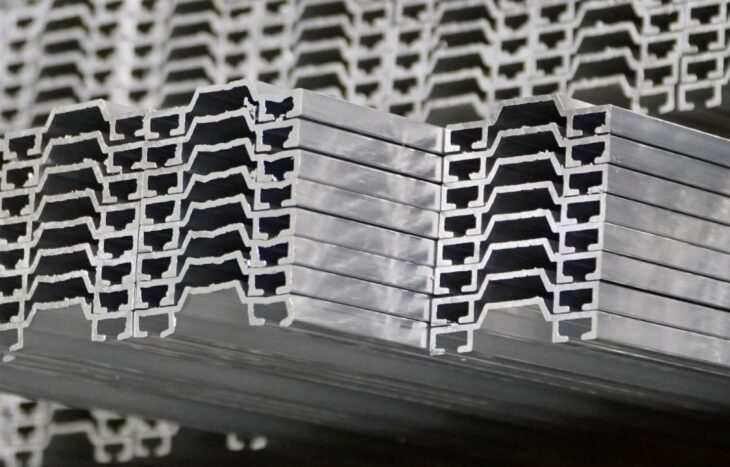By Lynn Brown, Long Point Associates.
Environmental Product Declaration (EPDs) are essentially an “environmental nutrition label” for a product. But rather than telling the customer how many calories or saturated fat in a package of chips, EPDs provide data on the environmental impact resulting from the production of a specified industrial product, like aluminum extrusion. EPDs generally start from life cycle analysis (LCA) as a basis and include information such as the global warming potential (GWP) measured in CO2 equivalents, acidification potential (AP) in SO2 equivalents, eutrophication potential (EP) in phosphate equivalents, and smog formation potential (SFP) in halocarbons (CFC) equivalents. The EPD will also include information on the ozone depletion potential (ODP) and the abiotic resource depletion potential (ADP) of the product. In order to best communicate the environmental performance and impact of a product or material over its lifetime, all EPDs are produced under several ISO standards and are certified by an independent third party.
Background
In 2015, the Aluminum Extruders Council (AEC) launched an effort to develop the first aluminum extrusion industry EPD. At the time, a driving pressure was the LEED sustainability certification program of the U.S. Green Building Council, which in 2016, was being upgraded from LEED 2009 to v4. Architects in search of LEED certification for their projects would no longer be able to rely on the recycled content of materials employed for LEED credits; those credits would now be based on using materials for which there were EPDs. Some architectural firms went so far as to threaten elimination of materials without EPDs from their libraries. As a result, competitive materials organizations ranging from WorldSteel to the American Wood Council were developing EPDs.
The AEC completed and issued its first EPD in October 2016 — or rather, the council introduced two EPDs, one for standard extrusions and a second for thermally-enhanced extruded products. To produce these EPDs, data was submitted by 11 AEC members, covering 30 locations with 85 presses and a host of paint, anodizing, and thermal break operations. In aggregate, the data covered 1.7 billion lbs of North American extrusion production, or about one-third of all North American production for 2015, the subject year.
Under the ISO standards that define them, EPDs have a “shelf life” of five years, and those initial AEC EPDs hit their “use by” date on October 4, 2021. Therefore, in late 2020, the AEC began gearing up to update its EPDs with contemporary data. Unfortunately, COVID was in full force at the time, which led to a series of delays and the 2016 EPDs were extended. The updated EPDs — which were again separated into documents for standard and thermally enhanced extrusions — were finally certified and issued on November 1, 2022.
In addition to being a common requirement in the non-residential construction market (especially when seeking LEED certification), EPDs are increasingly being requested by other markets, including automotive and consumer products. This is because there is a growing trend across many industries regarding the recording and transmitting of information about environmental impact. Not to mention the fact that EPDs are an effective means for a manufacturer to provide data on the environmental impact of their products—making them stand out as a supplier.
A Rapidly Changing Environment
Currently, LEED is much less the focus of the recent initiative. While LEED still offers credits for using building materials with EPDs, the priority has shifted to reducing carbon-embodied products and carbon emissions, as the world focuses on climate change and the need to limit global warming.
The focus on carbon emissions is perhaps most notable in the building and construction sector, where more than 100 businesses and organizations have signed the World Green Building Council’s Net Zero Carbon Buildings Commitment,1 which seeks to decarbonize the buildings sector by 2050 and get halfway there by 2030. The U.S. government is more aggressive in its goals, having made the commitment that “all new [Federal Government] construction and major modernization projects larger than 25,000 [gross square feet] entering the planning stage will be designed, constructed, and operated to be net-zero emissions by 2030.”2
To put some incentives behind that commitment, the U.S. introduced the Inflation Reduction Act (IRA) in 2022, which includes $2.15 billion in funding for General Service Administration (GSA) projects employing “low embodied-carbon” construction materials, with the funds to be committed by September 30, 2026. As of this writing, the GSA is finalizing the initial standards, which are slated to be released soon. The initial standards will cover glass, steel, asphalt, and concrete—sectors that have been deemed by the GSA to represent one half of greenhouse gas emissions for U.S. construction materials. However, the GSA has stated that aluminum is also high on their list, with similar standards likely to come out this year.
While the GSA has deferred issuing the final standards for the first four materials, the preliminary standards for those materials, like steel, make it clear that none of the IRA funding can be employed to use materials that are “below average” when it comes to GWP. In fact, only the best 20% of materials will be given preference (Table I), with procurement of materials in the next quintile only authorized if “the best 20%” are not available locally. Likewise, if the top 40% are not available, then materials listed as above average will be used. In order to be verified and receive qualification, both a facility and product specific EPD (not an industry EPD like AEC has produced) will be required.
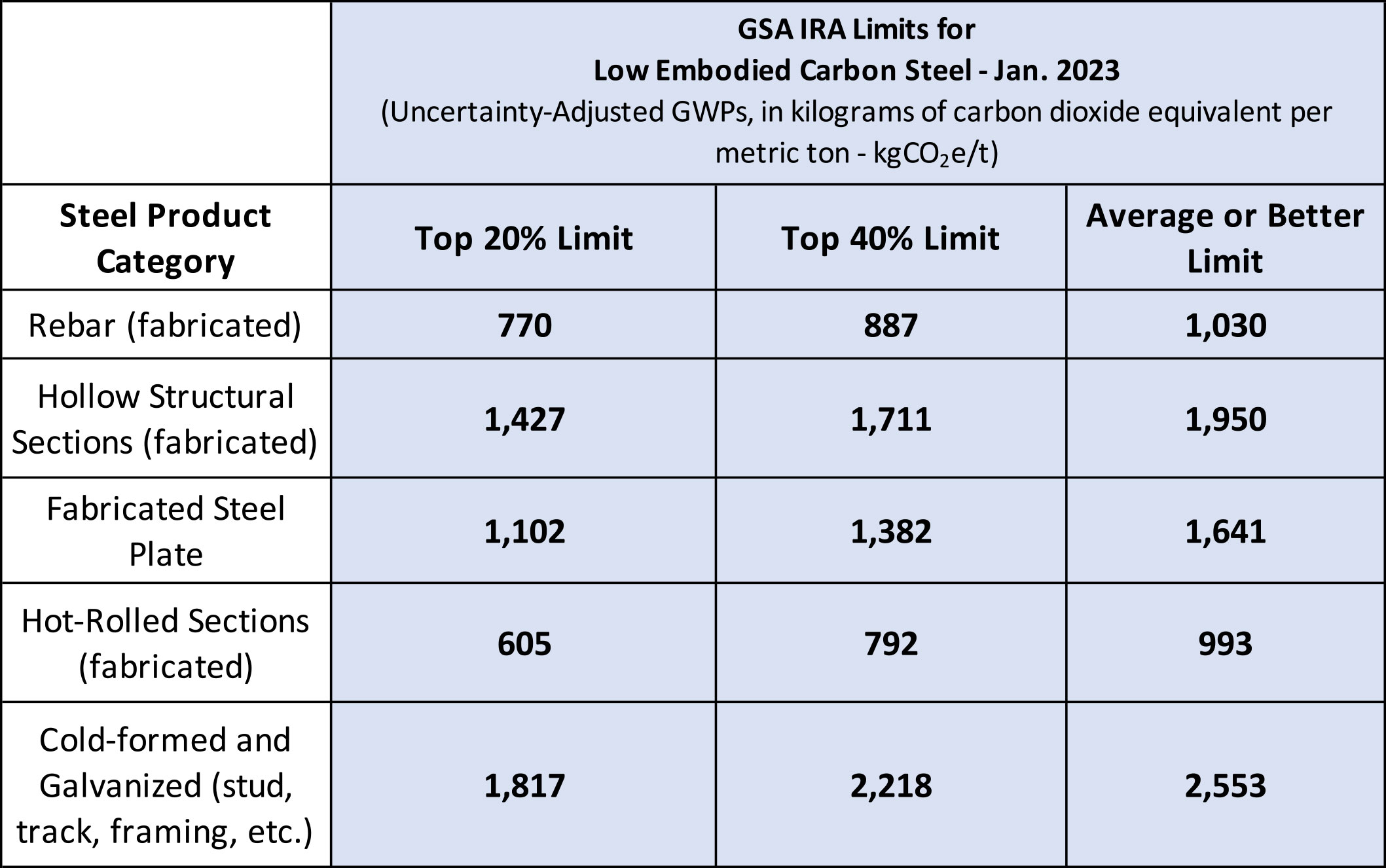
Other industries — particularly consumer facing industries — are not far behind the construction sector. Per McKinsey Sustainability, some “400 large US-based companies have also committed to net-zero targets of their own, many of which have set ambitious emissions reductions targets for 2030 or sooner.”3
In the automotive market, leading OEMs have announced net-zero commitments—with General Motors, Mercedes-Benz, and Jaguar Land-Rover targeting 2040, while Ford, Toyota, Audi, and VW have set targets for 2050 (Figure 1). It is clear that many of these companies expect their suppliers—e.g., their extrusion suppliers—to help them achieve their net zero ambitions. For example, General Motors is demanding that suppliers sign carbon-neutrality and sustainability plan pledges. Meanwhile, Tesla is now asking new suppliers to commit to ASI’s Performance Standard, which has specific environmental, social, and governance (ESG) criteria. This includes requirements for the aluminum suppliers to document their environmental footprint using independent verification, as well as developing a carbon reduction plan.
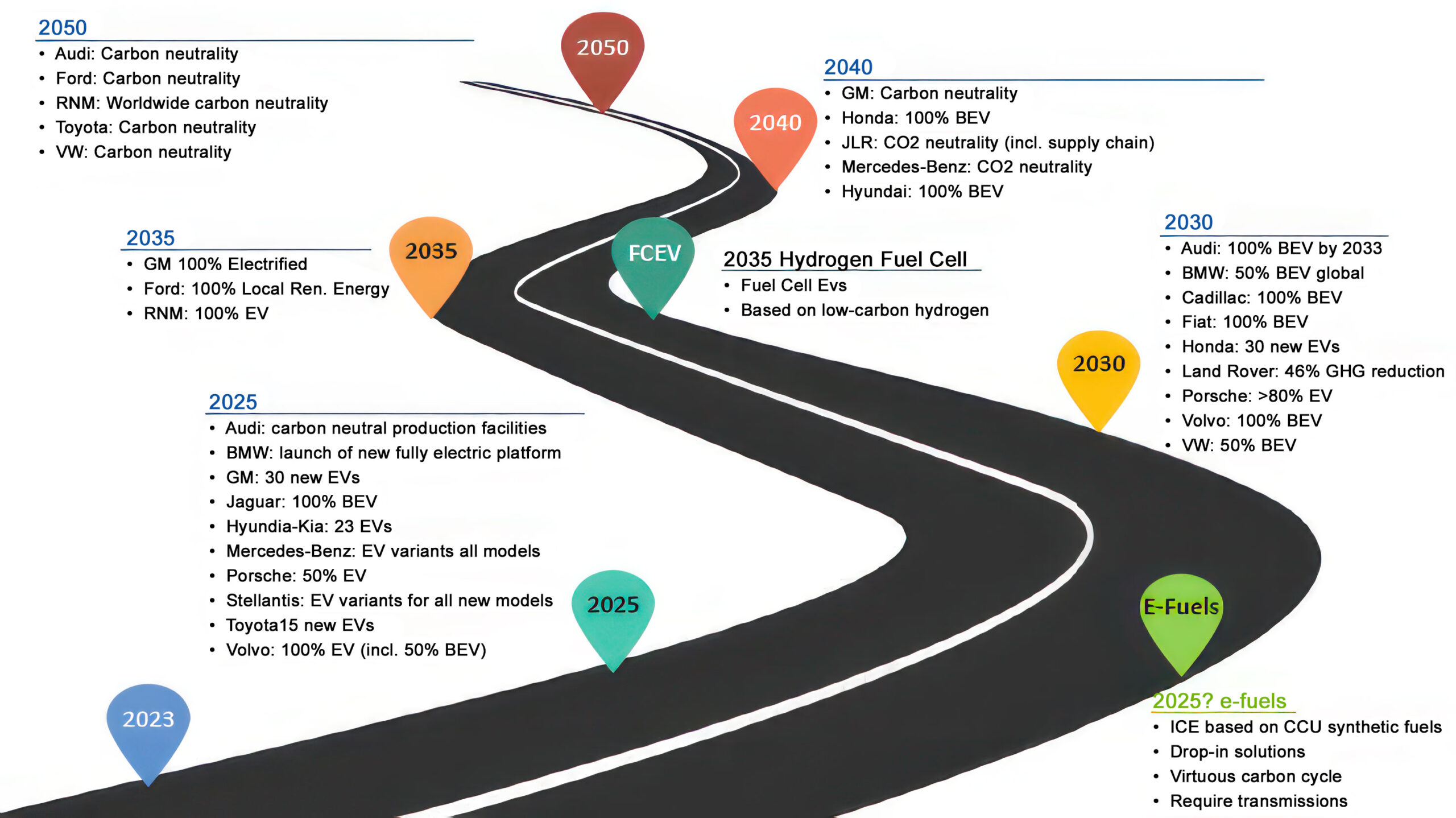
Extruders are reporting similar “requests” from other consumer-facing customers. With primary aluminum being a carbon-intensive material (trailing only concrete and steel in carbon contribution to buildings), it is no surprise that extrusion users are increasingly asking about the environmental impact of aluminum extrusions. More importantly, customers are concerned with what extruders are doing to reduce their carbon footprint and help them achieve their own carbon reduction goals.
AEC’s Second Round of EPDs
To better define the aluminum extrusion industry’s environmental impact and illustrate potential carbon reduction strategies, the AEC not only updated its extrusion industry EPDs, as noted earlier — but also commissioned a sensitivity analysis of the results to highlight carbon reduction potential; more on that sensitivity analysis shortly. As with the previous EPDs, the new editions include one covering mill finish, anodized, and painted aluminum extrusions and one covering thermally improved anodized and painted extrusions.
Data for the recent update was supplied by eight member companies across the U.S. and Canada for the 2020 to 2021 time period. This data covers 31 separate production facilities with nearly 100 extrusion presses, ten anodizing facilities, ten paint facilities (liquid and powder), six thermal management operations, and 13 casthouses. In total, the production covered represents 38% of the extrusion produced in North America for that time period, up from the 33% coverage of the earlier effort.
That data — along with the corresponding LCA — was compiled by Sphera, Inc., a leading provider of ESG consulting services. It was certified by UL Environmental.
It is important to remember that the two EPDs produced by the AEC cover a range of product forms. Also note that fabrication was not considered in these EPDs, simply due to the almost infinite variations possible. Therefore, these are Industry Average EPDs, which are typically developed by an industry association reporting the average product of multiple companies in a clearly defined manner.
EPDs can also be for a specific product from a single company or a specific project and product from a single site manufacturer. In addition, a manufacturer can obtain a group EPD providing an analysis of a range of similar products that are produced at one or more of the manufacturer’s sites.
The Big Takeaways
While the new EPDs and LCA provide extensive data about extrusion’s environmental impact, there are four big takeaways that can be highlighted here. First, producing high-quality aluminum extrusions with substantial recycled content has again been proven feasible. The average raw material mix identified in the EPDs was 53% recycled and 47% prime.
Second, raw material is the primary determinant of an extrusion’s environmental footprint. For mill finish extrusion, the extrusion process itself — including aging and packaging — only represents about 25% of its GWP (as measured in CO2 equivalents). The remaining 75% comes from the raw materials, particularly the billet and whether it comes from low-carbon or high-carbon prime aluminum or recycled aluminum.
Third, finishing extrusions by anodizing adds minimal environmental impact. In fact, anodizing adds just 5% to the GWP. Painting has a higher impact, but still only represents 14%.
Fourth, adding a thermal barrier to the extrusion adds less than 10% to the environmental impact. In addition, the thermal barrier provides benefits to the final product, substantially reducing the operational carbon footprint of a window unit.
Reducing the GWP of Extrusions
Upon completion of the EPDs, the AEC commissioned Sphera to conduct several sensitivity analyses, assessing the impact of variations in the raw material used and in the internal operation of the extrusion plant. The analysis showed that one of the major levers to impact extrusion GWP is the use of recycled materials in the billet (Figure 2). A billet composition of 47% prime and 53% recycled content was used as the baseline case for the analysis. Reducing the prime aluminum content from 47% to 30% drops the GWP for module A1-A3 (meaning the GWP attributable to raw materials, in-bound transport, and the extrusion plant process) by 23%—virtually offsetting the carbon contribution from the whole extrusion process. Reducing prime aluminum even further, down to 10%, fully offsets the GWP contribution from extrusion, finishing, and thermal enhancement.
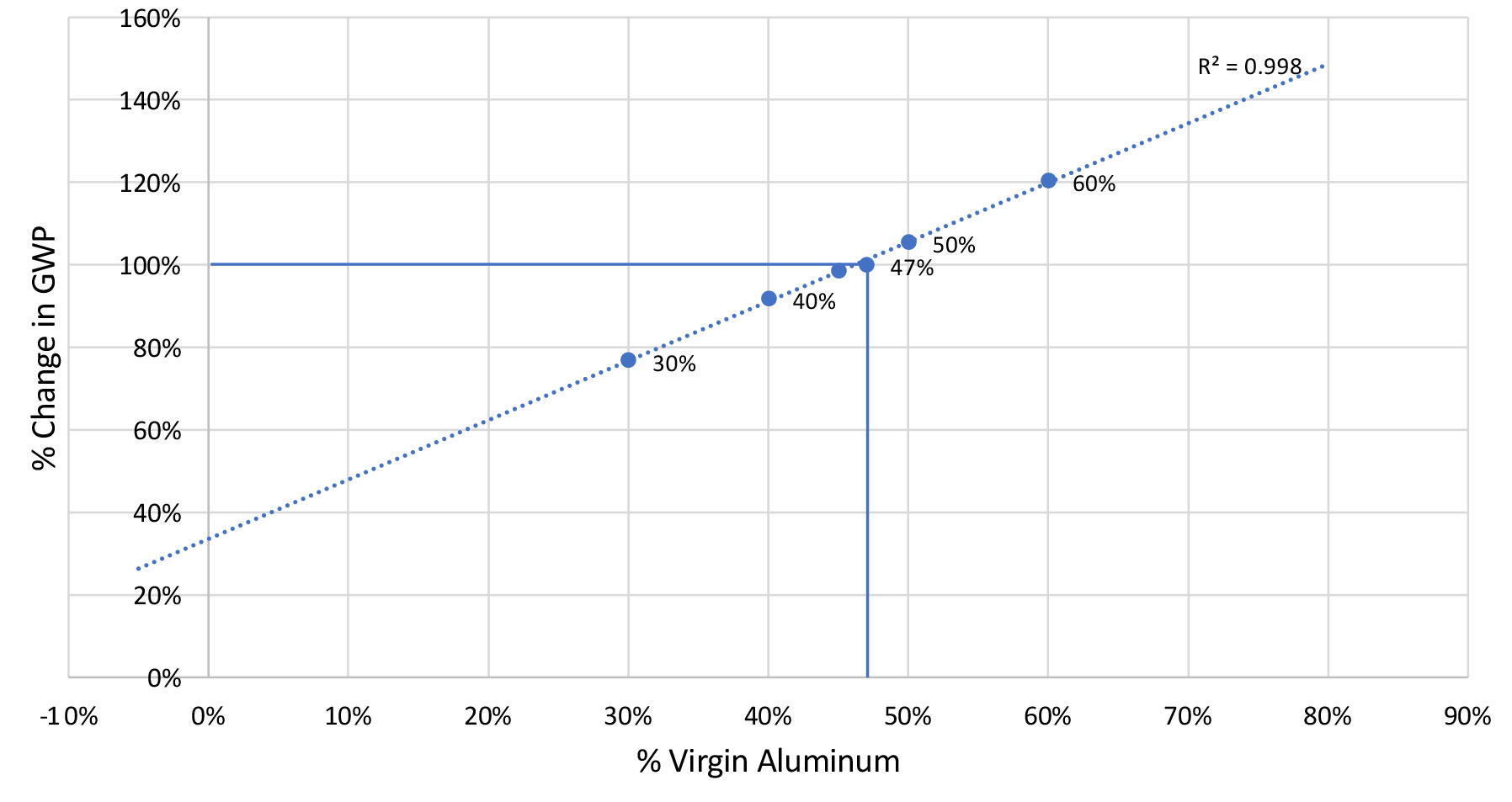
Of course, not all aluminum scrap is desirable for all applications due to various contaminants and product performance requirements. The sensitivity analysis does, however, provide a quantitative basis for extruder-specifier discussion. Is prime raw material really needed for the application? And is using prime worth incurring the additional environmental cost?
The second major lever is to change the source of the primary aluminum used in the billet by shifting to a lower carbon-intensive smelting source (Figure 3). The analysis used the same base case with billet containing 47% prime and 53% recycled content, resulting in a GWP of just over 10 kg CO2e/kg of extruded product. When the source of the primary aluminum is varied (while all other factors remain constant), the analysis shows the following results:
- When shifting the 43% prime content to an “average” Canadian source (where hydropower predominates), the GWP will decline to just over 8 kg CO2e/kg of extruded product.
- When shifting to an “average” Chinese source (where coal-fired electricity is common), the GWP will increase to around 17 kg CO2e/kg of extruded product.
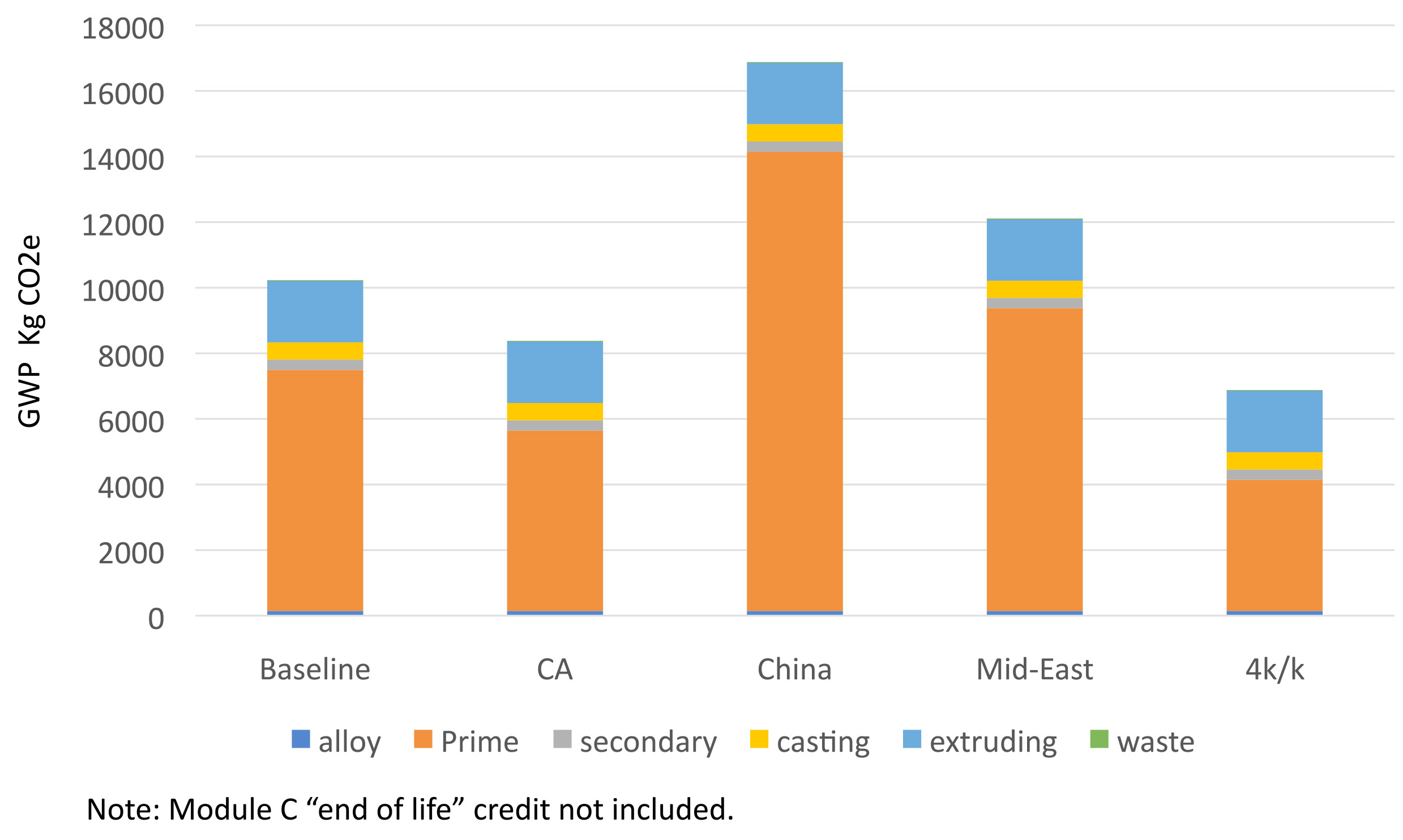
The Sphera analysis provides quantitative data, which can be the basis for discussions about sourcing billet from regions that focus on low-carbon primary production. In addition, it highlights the significant reductions in GWP that can be achieved, especially if one is willing to pay a bit more for certified “cleaner” billet, such as being offered by Rio Tinto, Alcoa, Hydro, and others.
Compared to the impact of the billet as a raw material, the activities within the extrusion plant are certainly a minor contributor to an extruded product’s GWP. However, how an extrusion plant operates is still a contributing factor and extruders need to address their own operations. Therefore, the AEC also asked Sphera to produce a sensitivity analyses demonstrating the impact of using renewable power sources for extrusion operations and of improving internal operational efficiency. This is relatively low hanging fruit, yet significant improvements can be made. To facilitate such initiatives, the AEC has launched a new Sustainability Team, which is focused both on documenting the environmental impact of extrusion operations and on assisting members in identifying the actions that they can take to reduce their carbon contribution.
Conclusion
The new EPDs developed by the AEC provide a contemporary and comprehensive picture of the extrusion industry’s environmental footprint, and the supplemental sensitivity analyses provide the quantitative basis for discussion about raw material alternatives and their impacts. It will take work across the value chain to yield the deep reductions in embodied carbon that are necessary.
At the same time, the contribution that extrusion-based products can make to reducing operational carbon of consumer products must also be considered. For example, lightweight vehicles consume less fuel and extrusion-based building components, such as light shelves and sun shades, reduce building energy use. In addition, extrusions’ durability reduces maintenance and refinishing costs, along with the use of materials and chemicals for both. Furthermore, at the end of their useful life, extrusions are easily recycled into new forms with no loss of properties, reducing the carbon generated by the next generation of products.
References
- “The Net Zero Carbon Buildings Commitment,” World Green Building Council.
- “Net-Zero Emissions Buildings by 2045, including a 50% reduction by 2032,” Office of the Federal Chief Sustainability Officer.
- “Navigating America’s net-zero frontier: A guide for business leaders,” McKinsey Sustainability, May 5, 2022.
Editor’s Note: The two EPDs and the underlying LCA report can be accessed at the AEC website.
This article first appeared in the April 2023 issue of Light Metal Age. To receive the current issue, please subscribe.

